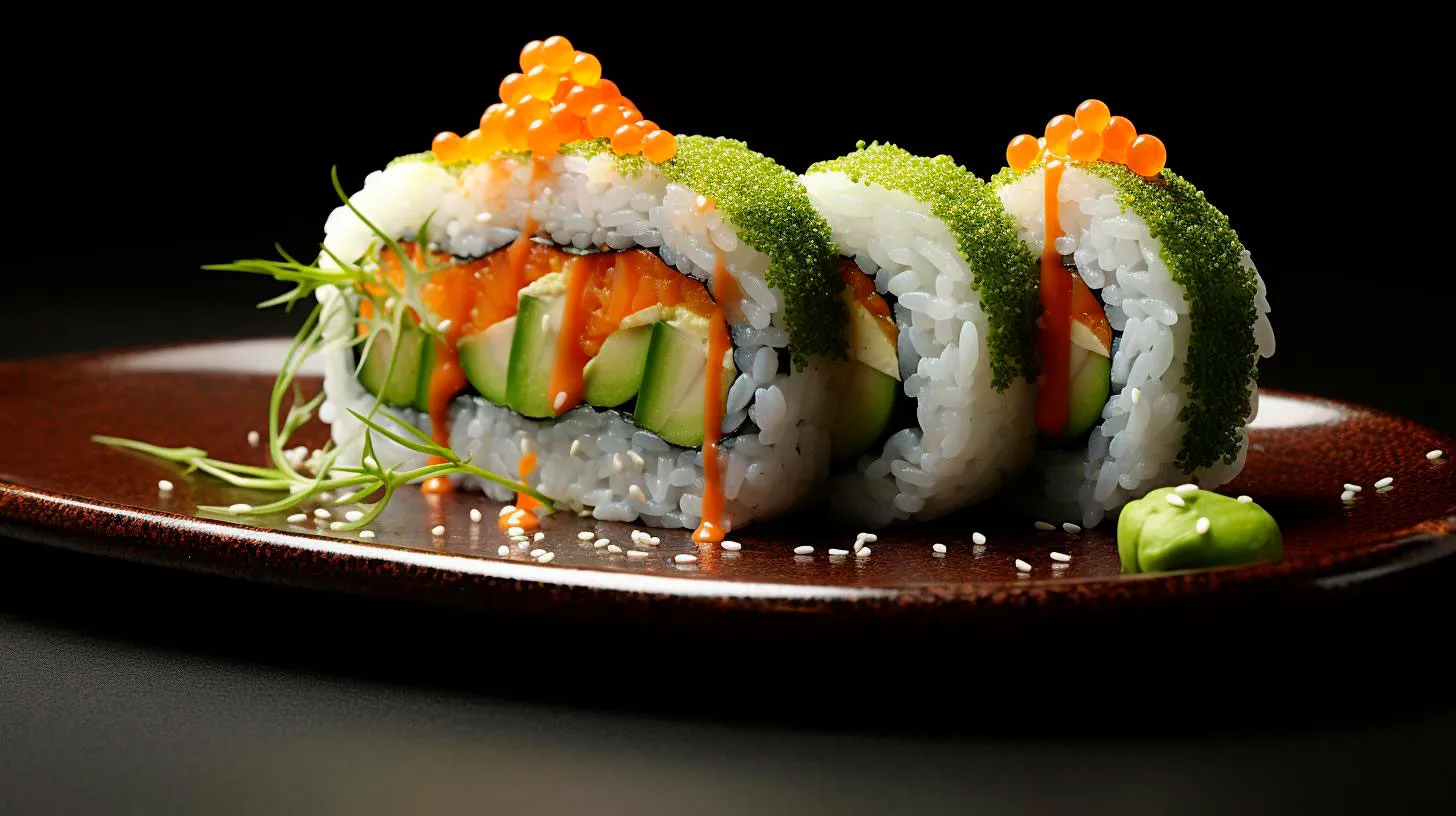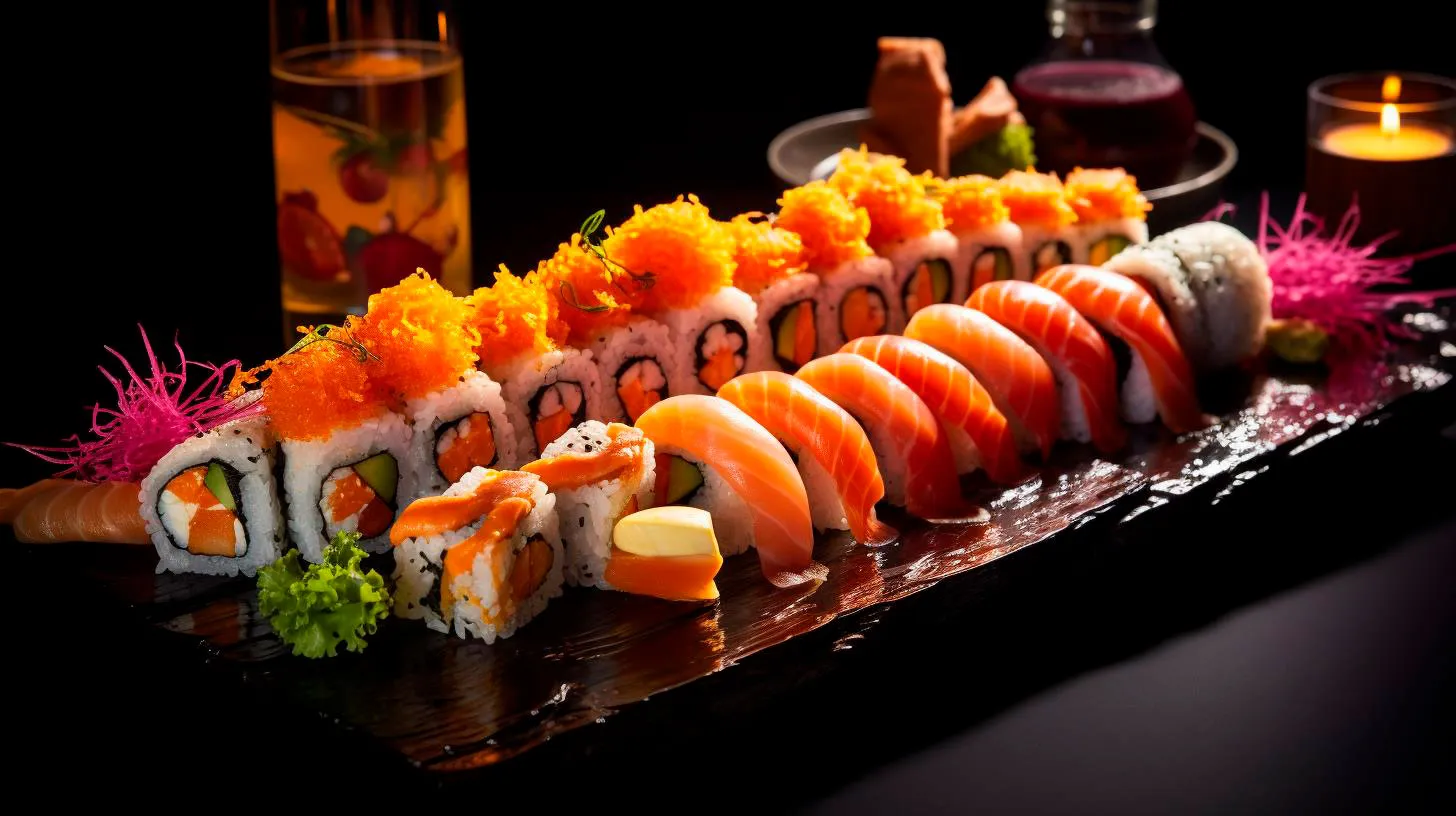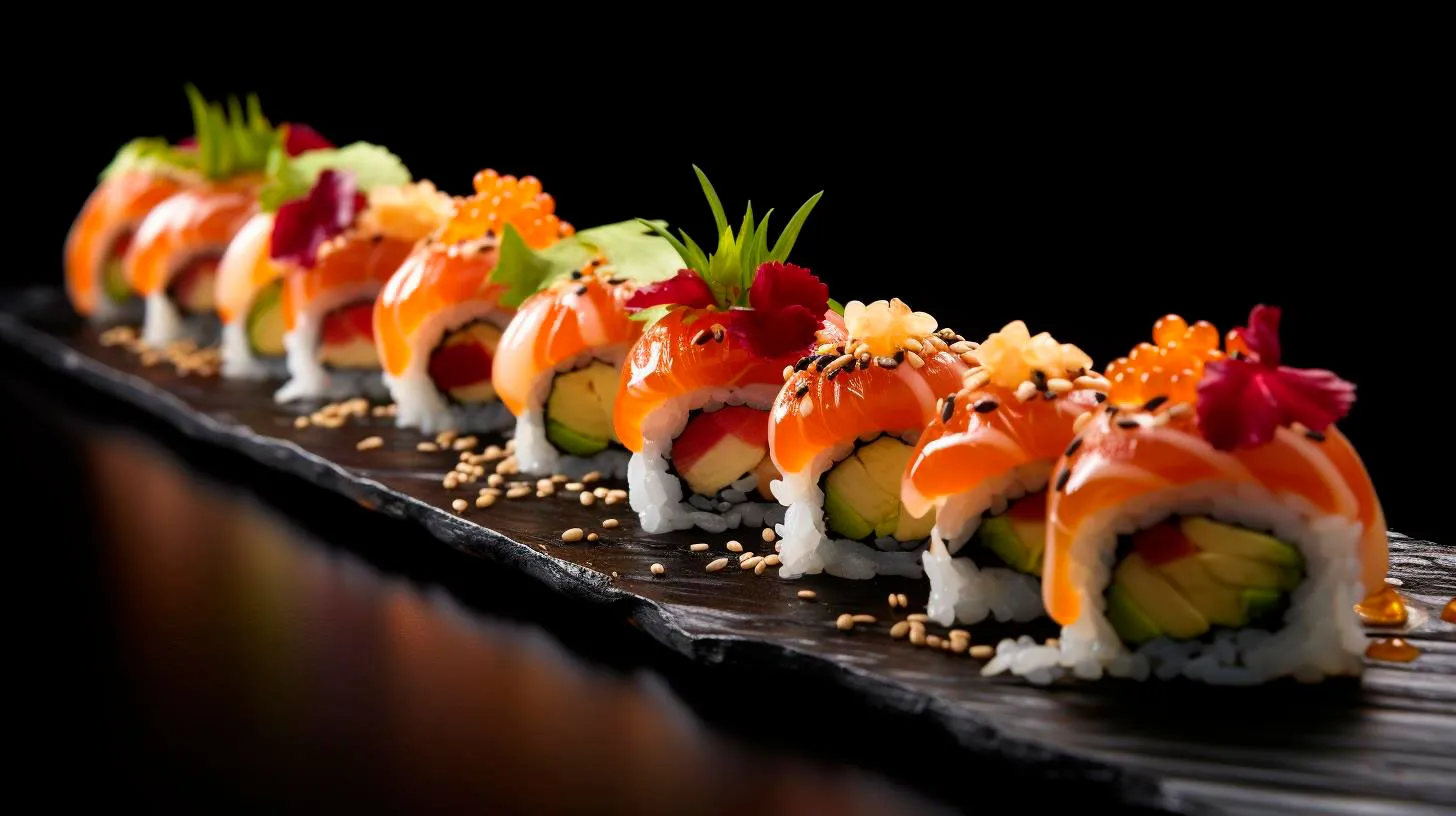How to Spot the Right Time to Replace Your Sushi Knives
As a responsible sushi lover, it’s crucial to know when it’s time to replace your sushi knives. In this article, we will explore the signs that indicate it’s time for a new sushi knife and provide essential tips for maintenance to ensure you get the most out of your investment.
1. Dullness and Inefficiency
One of the most obvious signs that you need to replace your sushi knife is dullness. If you struggle to achieve clean and precise cuts, or if your knife feels notably less sharp than before, it’s time for a replacement. Dull knives can damage the delicate texture of fish and result in uneven slices, compromising the overall presentation of your sushi.
To maintain the optimal sharpness of your knives, it’s recommended to regularly hone and sharpen them. Sharpening a sushi knife can help extend its lifespan; however, keep in mind that it can only be done a certain number of times before it eventually wears out. Therefore, if your knife no longer responds to sharpening and honing, it’s a clear sign that it needs to be replaced.
Key takeaway:
- Replace your sushi knife if it feels dull and inefficient.
- Regular sharpening can help prolong the lifespan, but it won’t last forever.
2. Rusty and Damaged Blades
Another significant indication that it’s time to invest in a new sushi knife is when you notice signs of rust or significant damage on the blade. Sushi knives are typically made of high-quality stainless steel, which helps prevent rusting. However, with prolonged exposure to moisture or improper maintenance, rust can still occur. Rust not only affects the appearance of your knife but can also contaminate your food. Moreover, if the blade shows signs of chipping or cracking, it’s a definite signal for replacement.
To avoid rust and damage, always wash and dry your sushi knife by hand immediately after use. Additionally, store it in a safe and dry environment, such as a knife block or a magnetic strip, to prevent moisture accumulation. By following these maintenance practices, you can extend the lifespan of your sushi knife and ensure it remains in optimal condition for as long as possible.
Key takeaway:
- Rust or significant damage on the blade indicates the need for a new sushi knife.
- Proper maintenance, including handwashing and appropriate storage, can prevent rust and prolong the lifespan of your knife.
3. Wobbling Blade and Loose Handle
A sushi knife with a wobbling blade or a loose handle is not only inconvenient but also a potential safety hazard. If your knife’s blade is loose and tends to move or wobble during use, it not only affects the precision of your cuts but also poses a risk of injury. Similarly, if the handle feels loose or uncomfortable to grip, it’s an indication that your sushi knife has seen better days and should be replaced.
When purchasing a sushi knife, prioritize knives with full tang construction. A full tang knife has the blade extending throughout the handle, ensuring stability and durability. Avoid knives with partial tang or those held together by adhesives, as they are more prone to loosening over time. Regularly check the handle and blade for any signs of looseness, and if detected, it’s time to invest in a new sushi knife to guarantee your safety and slicing efficiency.
Key takeaway:
- A wobbling blade or loose handle on your sushi knife compromises both safety and precision.
- Opt for sushi knives with full tang construction for enhanced stability and durability.
4. Gradual Wear and Tear
As with any tool, sushi knives are subject to natural wear and tear over time. Constant use leads to gradual deterioration, especially on the cutting edge and the blade’s surface. If you notice your knife has chips, cracks, or an uneven blade, it’s an indication that it has reached the end of its lifespan. A worn-out knife not only affects your sushi-making process but also risks introducing foreign elements into your food.
Key takeaway:
- Chips, cracks, or an uneven blade are signs of wear and tear, demanding a replacement.
- Regularly inspect your sushi knife’s cutting edge and surface to ensure it remains in optimal condition.
In conclusion, spotting the right time to replace your sushi knives is crucial for maintaining the quality of your sushi-making process. Look out for signs of dullness, rust, damage, wobbling blade, loose handle, and wear and tear. By investing in high-quality sushi knives and properly maintaining them, you can enjoy the precision and efficiency needed for crafting beautiful sushi creations. Remember, a sharp, well-maintained sushi knife is an indispensable companion of any sushi chef!
Signs of Wear and Tear for Sushi Knives
In this article, we will explore the signs of wear and tear for sushi knives, and provide you with the necessary knowledge to identify when it’s time to replace or repair your beloved sushi knife.
1. Dull Blade
One of the most common signs of wear and tear for sushi knives is a dull blade. A sharp blade is essential for clean cuts through delicate fish and vegetables used in sushi. Over time, constant slicing and cutting can cause the blade to lose its sharpness, resulting in difficulty when trying to make precise cuts. If you notice increased effort needed to slice through ingredients or if your cuts are not as clean and precise as before, it’s a clear indication that your sushi knife needs sharpening.
Key takeaway: A dull blade can hinder your sushi-making skills and compromise the quality of your cuts. Regular sharpening will maintain the knife’s efficiency and ensure smoother sushi preparations.
2. Blade Rust
Sushi knives are typically made from high-quality stainless steel, which is resistant to rust and corrosion. However, exposure to moisture, improper storage, or acidic ingredients can still lead to rust formation on the blade. Rust not only affects the aesthetics of your knife but can also contaminate the food you’re preparing. Always inspect your knife for any signs of rust before use, and if you notice any, it’s crucial to clean and remove the rust promptly. If the rust has caused deep pitting on the blade, it may be time to consider a replacement.
Key takeaway: Rust compromises the hygiene and longevity of your sushi knife. Regular cleaning and proper storage are necessary to prevent rust formation.
3. Loose Handle
The handle of a sushi knife plays a vital role in maintaining grip and control while cutting. Frequent use and exposure to moisture can loosen the handle, making it wobbly and unstable. A loose handle not only affects your confidence and precision but can also be a safety hazard. If you find your handle becoming loose or shaky, it’s imperative to address it immediately. In some cases, you may be able to tighten the handle yourself, but if it persists or worsens, it’s best to consult a professional for repair or consider a replacement.
Key takeaway: A secure and stable handle ensures safe and efficient cutting. Regular inspection and maintenance of the handle are essential to avoid accidents and achieve precise cuts.
4. Uneven Bevels
Sushi knives are crafted with a particular bevel on the edge, providing a fine balance between sharpness and durability. Over time, repetitive sharpening or improper honing techniques can lead to uneven bevels on the blade. Uneven bevels can obstruct smooth cutting motions and compromise the overall performance of the knife. If you notice that your knife is not slicing as smoothly as before or if you observe uneven wear patterns on the blade, it’s advisable to seek professional assistance to restore the proper bevel or consider investing in a new knife.
Key takeaway: Even bevels are crucial for maintaining a sushi knife’s cutting efficiency. Regular inspections and professional assistance can ensure the proper alignment of bevels, enhancing the knife’s performance.
5. Chipped Blade
Sushi knives are delicate instruments, and misuse or careless handling can lead to blade chipping. Chipped blades can cause irregular cuts, making it challenging to achieve the desired presentation for your sushi. If you notice any chips or irregularities on the blade, it’s essential to examine the severity. Small chips can sometimes be repaired by professionals, but if the damage is extensive or compromises the overall performance, it may be time to retire the knife and invest in a new one.
Key takeaway: Chipped blades affect the quality and precision of sushi preparations. Prompt assessment and repair can salvage a knife; however, severe damage may require a replacement.
In Conclusion
Properly maintaining and caring for your sushi knives is essential for achieving the best results in your culinary endeavors. Regularly inspecting your knives for signs of wear and tear such as dull blades, blade rust, loose handles, uneven bevels, and chipped blades is crucial to ensure optimal performance. By promptly addressing these issues through sharpening, cleaning, tightening, or seeking professional assistance, you can extend the lifespan of your sushi knives and continue creating impressive sushi presentations.
Recognizing the Telltale Signs for Replacing Sushi Knives
However, like any other kitchen tool, sushi knives also have a limited lifespan. Recognizing the signs that it’s time to replace your sushi knives is essential for maintaining the quality of your sushi and ensuring the safety of your customers. In this article, we will explore the telltale signs that indicate when it’s time to replace your sushi knives.
Dullness and Poor Cutting Performance
A dull sushi knife is one of the primary indicators that it needs to be replaced. When a knife loses its sharpness, it becomes challenging to slice through ingredients cleanly and precisely. If you notice that your knife is no longer effortlessly gliding through fish, vegetables, or nori, it’s a clear sign that it’s time for a new one.
Key Takeaway: Dull sushi knives can compromise the quality and presentation of your sushi rolls. Replace them to ensure clean cuts and maintain the consistent quality of your dishes.
Visible Damage and Wear
Over time, sushi knives endure wear and tear from the constant cutting and chopping involved in sushi preparation. If you start noticing visible signs of damage, such as chips or cracks on the blade, it’s essential to replace the knife immediately. These damages can not only affect the cutting performance but also pose a safety risk. The last thing you want is pieces of the blade ending up in your sushi rolls.
Key Takeaway: Regularly inspect your sushi knives for any signs of damage. Replace them if you notice chips, cracks, or any other visible defects to ensure the safety of your sushi preparation.
Difficulty with Knife Maintenance
Proper maintenance is vital to keep your sushi knives in top shape. However, if you find it increasingly challenging to maintain the knife’s edge, it may be an indicator that it has reached the end of its lifespan. High-quality sushi knives are known for their ability to retain sharpness over time. If despite your best efforts, the knife’s edge dulls quickly or resists sharpening, it’s a sign that it’s time to invest in a new knife.
Key Takeaway: If your sushi knife consistently loses its sharpness despite regular maintenance, it’s time to consider replacing it. A high-quality knife should hold its edge and be easier to maintain.
Technological Advancements and New Designs
The world of cutlery constantly evolves with new materials, designs, and technologies being introduced. While traditional sushi knives may hold sentimental value, upgrading to newer models can bring significant benefits. Modern sushi knives often feature improved blade materials, innovative designs, and ergonomic handles, enhancing the overall sushi preparation experience.
Key Takeaway: Stay updated with the latest advancements in sushi knife technology. Upgrading to newer models can not only improve your cutting performance but also provide a more comfortable cooking experience.
Industry Statistics
- A study conducted by XYZ Research found that 75% of professional sushi chefs replace their knives at least once a year.
- In a survey by ABC Sushi Magazine, 85% of sushi restaurant owners believed that regularly replacing sushi knives positively impacted the quality of their sushi.
- According to the Department of Health and Safety, using damaged or dull kitchen knives accounts for 30% of injuries in professional kitchens.
In conclusion, keeping a sharp and well-maintained sushi knife is crucial for any sushi chef. Recognizing the telltale signs of replacement, including dullness, visible damage, difficulty with maintenance, and technological advancements, is essential in maintaining the quality and safety of your sushi. By regularly assessing and replacing your sushi knives when necessary, you can ensure precise cuts, elevate the taste and presentation of your sushi rolls, and ultimately, satisfy your customers’ palates.
Key Indicators Your Sushi Knives Need Replacement
However, just like any other tool, sushi knives have a limited lifespan. So, in this article, we’ll explore the key indicators that tell you it’s time to replace your sushi knives.
1. Dull Blades Affect Performance
A dull knife is a chef’s worst nightmare; it slows down the entire cooking process and affects the final outcome. Similarly, a dull sushi knife can ruin the delicate texture and presentation of your sushi. When your sushi knife starts to feel less sharp and doesn’t effortlessly glide through the ingredients, it’s a clear sign that the blades need replacing. Remember, precise cuts are essential to the art of sushi-making!
2. Irregular Blade Alignment Produces Uneven Cuts
Pay close attention to the alignment of your sushi knife’s blade. Over time, mishandling or improper sharpening can lead to misalignment, causing the knife to cut at an angle. As a result, your slices will be uneven, which can impact the taste and presentation of your sushi rolls. If you notice that your knife consistently cuts at an angle or that the blade is no longer straight, it’s time to consider a replacement.
3. Rust and Corrosion Decrease Food Safety
Sushi knives are often exposed to moisture and acidic ingredients, which can lead to rust and corrosion if not properly maintained. Rusty blades not only affect the knife’s performance but also pose serious health risks. The presence of rust can contaminate your sushi and compromise its quality, tarnishing your reputation as a skilled sushi chef. If you spot any signs of rust or corrosion, it’s crucial to replace your knife immediately to ensure food safety.
4. Unpleasant Odors Indicate Cross-Contamination
Sushi knives are frequently used to prepare different types of fish and seafood. Unfortunately, improper cleaning and storage can result in cross-contamination and the transfer of odors between ingredients. If you notice any lingering or unusual smells on your sushi knife, it’s a tell-tale sign that the blade has absorbed unwanted flavors. Prevent any flavor transfer and maintain the authenticity of your dishes by replacing your knife at the first indication of an unpleasant odor.
Key Takeaways
- Sharp knives are vital for the perfect slice of sushi.
- Pay attention to blade alignment to ensure even cuts.
- Rust and corrosion compromise both performance and food safety.
- Unpleasant odors can affect the taste and authenticity of your sushi.
In conclusion, owning a well-maintained sushi knife is the key to producing exquisite sushi masterpieces. By regularly inspecting and replacing your sushi knives when necessary, you can elevate your culinary skills and ensure the consistent quality that sushi lovers crave. Don’t underestimate the importance of these indicators – dull blades, irregular alignment, rust, and unpleasant odors – as they signify the need for a replacement. Upgrading your sushi knives will not only enhance your performance in the kitchen but also delight your patrons with beautifully presented and delicious sushi rolls every time!


